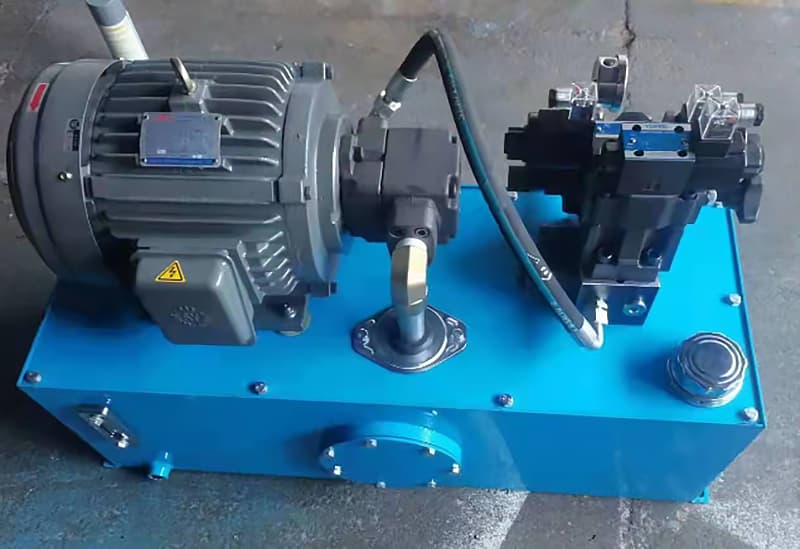One way to determine if a hydraulic pump needs replacement is to calculate its efficiency.
Hydraulic pumps with low efficiency not only cause the performance of the entire system to decline but also pose potential safety and financial risks.
Sometimes, when hydraulic equipment slows down significantly, calculating the pump’s efficiency may not be necessary before replacing it.
However, in other cases, comparing the pump’s actual efficiency to its theoretical efficiency can be helpful.

1. What Are the Different Categories of Hydraulic Pump Efficiency?
Hydraulic pump efficiency can be divided into three categories: volumetric efficiency, mechanical efficiency or hydraulic efficiency, and overall efficiency.
(1) Volumetric efficiency
Volumetric efficiency is typically the most commonly used type of efficiency. It evaluates the condition of the hydraulic pump based on its internal leakage. Volumetric efficiency considers the hydraulic oil pumped by the pump compared to the theoretically expected hydraulic oil output.
Before calculating volumetric efficiency, you need to know the theoretical flow rate of the pump by multiplying its displacement by its driving speed.
- Theoretical flow rate = Displacement per revolution X Driving speed
Once you understand the theoretical flow rate, you can use a flow meter to calculate the actual flow rate, then divide the actual flow rate by the theoretical flow rate to obtain the volumetric efficiency of the hydraulic pump.
- Volumetric efficiency = (Actual flow rate / Theoretical flow rate) X 100
(2) Mechanical/Hydraulic efficiency
Mechanical efficiency compares the actual torque required to drive the pump with its theoretical torque.
- Mechanical/hydraulic efficiency = (Theoretical torque / Actual torque) X 100
If the mechanical efficiency is 100%, it means that the hydraulic pump can deliver flow without requiring any torque at zero pressure. However, in reality, this is impossible due to mechanical and fluid friction.
(3) Overall efficiency
The total efficiency is obtained by multiplying the other two efficiencies. You can use overall efficiency to calculate how much driving force a hydraulic pump needs at a given flow rate and pressure. For the same flow rate and pressure output, higher-efficiency pumps will obviously require less power, and lower-efficiency pumps will lose more energy in the form of heat.
2. When Should a Hydraulic Pump Be Replaced?
If the efficiency is too low, the hydraulic pump should be replaced. Ignoring or failing to identify signs of hydraulic pump failure is unsafe and may result in other costly losses.
In addition to calculating the efficiency of the hydraulic pump, there are some warning signs that may indicate it is time to replace the hydraulic pump:
(1) The pump makes loud noises;
(2) Internal leakage;
(3) External leakage;
(4) High operating temperature.


